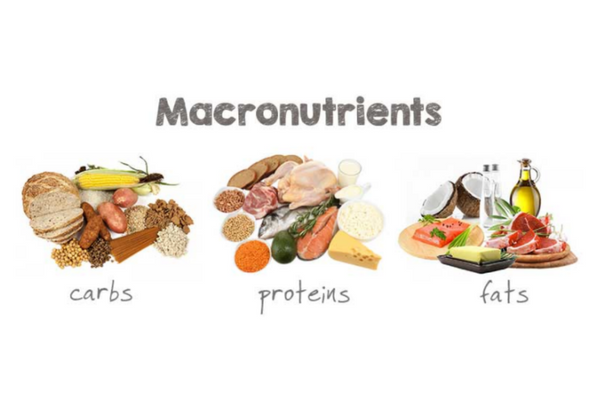There is so much information to share on the topic of “nutrition” but what we eat daily determines our health and influences our overall fitness goals so it’s important we get it right.
Nutrition becomes even more essential if we are interested in losing a good amount of fat for weight loss.
Let me explain further.
Nutrition is categorized into macronutrients and micronutrients.
Macronutrients include carbohydrates, proteins and fats. They are referred to as the sources of energy in the body. For weight loss, a good balance for macro calculation should be 25% carbohydrates/45% protein/30% Fats.
Micronutrients such as vitamins and minerals support the functions going on in the body and promote the overall well-being of the body.
In this article, we will focus on the macronutrients.
Carbohydrates
They are the major source of energy in the body which are burnt for energy. A gram of carbohydrate provides 4 calories. Carbohydrates are broken down to glucose when eaten. When the glucose level in the blood skyrockets, insulin will be secreted. The insulin helps to remove excess glucose from the blood. It achieves this in 2 steps- it will channel the glucose to muscles for energy and then convert the unused glucose into fat.
Thus, carbohydrate intakes must be minimal to lose body fat. This, however, does not mean that carbohydrate intake should be restricted because the body will burn protein for energy in the absence of carbohydrate. This protein is obtained from the muscles. This situation is undesirable.
Let’s dig a little deeper.
Carbohydrates are divided into simple and complex types.
Simple carbohydrates comprise glucose, fructose, sucrose and lactose. Glucose (also known as blood sugar) is mainly found in food or in the body by breaking down the complex carbohydrates. Simple carbohydrates can be easily absorbed into the bloodstream and can cause a sudden hike in the glucose levels present in the blood. This makes the insulin to overreact and converts lots of excess simple carbs into fat.
Complex carbohydrates are further processed by the body so that they can be broken down into simple ones. The consumption of complex carbohydrates releases simple carbs into the body. This allows to body to use them for energy production before being converted into fat. Thus, complex carbs need to be consumed, instead of simple carbs, to lose body fat.
So restrict or eliminate altogether your simple carbs which include white bread, white rice, refined flour, refined sugar, processed foods and soft drinks and inclure more complex carbs such as whole grain bread, brown rice, quinoa, sweet potatoes and oats.
Proteins
Protein repairs worn out tissues and muscles after an intense workout and protein helps to patch up the worn out body parts and act as building blocks.
Each gram of protein provides the body with 4 calories. The consumption of protein, which does not lead to the secretion of insulin, as a source of energy is recommended for fat loss programs hence why you hear alot about increasing your protein intake and protein should be consumed at most meals. Glucagon is secreted when protein is consumed. Glucagon inhibits insulin secretion. Consuming protein also suppresses appetite, another good reason to eat is regularly.
A diet comprising high protein and low carbohydrates is recommended for losing fat. By high protein I’m referring to 1gram per 1 kilo body weight per day. So if you weigh 70kg, you need to consume as a minimum 70grams of protein per day. How do you do this? Include a portion in most meals and you’ll be covered.
Protein can be obtained from most dairy products such as milk, cheese and eggs. It can also be derived from lean meats like chicken breast, beef and fish or things such as nuts, legumes and beans.
Fats
One gram of fat provides the body with 9 calories. Fats slow down the rate at which glucose is absorbed into the blood. A moderate consumption of healthy fat is useful for a healthy and effective fat loss program.
We have good and bad fats.
Bad fats are harmful to the body and should be avoided at all costs. Excessive consumption of bad fats leads to both fat gain and the crave for more foods, thereby leading to more fat gain. Whenever you go shopping and you come across a food with “saturated fat” written on its label, do yourself a favour and put it back. Such fats are the worst and are responsible for lots of heart diseases, increase in cholesterol as well as other health problems when consumed in excess.
Trans-fatty acids are should also be ignored. They are found in processed foods.
Good fats comprise polyunsaturated fats and monounsaturated fats. They contain the essential fatty acids (EFAs) which could not be provided by the body but are needed by the body. They are classified as Omega-3 and Omega-6 and are known to lower cholesterol, improve absorption of fat-soluble vitamins and enhance insulin sensitivity as well as other health-related benefits.
Polyunsaturated fats can be found in fish, walnuts, pecans and vegetable oils like sunflower and safflower. Monounsaturated fats are found in avocados, cashews, peanut butter and olive oils.
A well-balanced meal plan doesn’t have to be difficult. By allowing a bit of time and a thought out structure of your meals ahead for the week will go along way in ensuring you stay on track with your health goals
For assistance, don’t hesitate to reach out (book in a complimentary weight loss session here) or download this FREE Meal Plan/Action Planner template to get you started.
Remember learning the right combination of carbs, proteins and fats will have an instantaneous effect on your health and weight loss goals so you want to invest in the time to learn to get it right.

